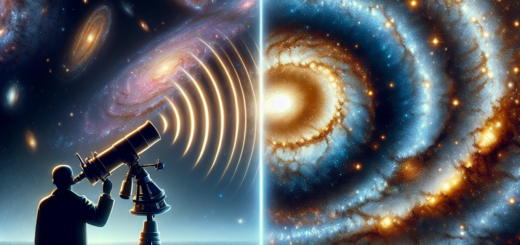The Birth and Evolution of Nebulae: How These Cosmic Clouds Shape the Universe
Nebulae are some of the most breathtaking and mysterious objects in the universe. These cosmic clouds of dust and gas have fascinated astronomers for centuries, and continue to play a crucial role in shaping the cosmos as we know it.
The birth of a nebula begins with the collapse of a giant cloud of gas and dust in space. This cloud may be triggered by the explosion of a nearby star, or by the gravitational pull of a passing galaxy. As the cloud collapses under its own gravity, it begins to heat up and form a dense core at its center. This core eventually becomes a protostar, the precursor to a fully-fledged star.
As the protostar continues to accrete mass from its surrounding cloud, it begins to shine brightly and emit intense radiation. This radiation ionizes the surrounding gas, causing it to glow and form a nebula. The most common type of nebula is the emission nebula, which emits light of its own and appears as a colorful, glowing cloud in space.
Nebulae come in a variety of shapes and sizes, from the intricate filaments of the Crab Nebula to the massive, billowing clouds of the Orion Nebula. Some nebulae are the remnants of supernova explosions, while others are the birthplaces of new stars. They serve as stellar nurseries, where young stars form from the gas and dust of their parent nebula.
Over time, the intense radiation and stellar winds of the newly formed stars can sculpt the nebula into complex shapes and structures. These processes can create stunning phenomena such as pillars of gas and dust, known as “elephant trunks,” or the delicate filaments of a planetary nebula.
Nebulae also play a crucial role in the evolution of galaxies. As stars are born and die within a nebula, they enrich the surrounding gas with heavy elements such as carbon, oxygen, and nitrogen. These elements are essential for the formation of new stars and planets, and are eventually dispersed throughout the galaxy by supernova explosions.
In recent years, advances in technology have allowed astronomers to study nebulae in unprecedented detail. Telescopes such as the Hubble Space Telescope have captured stunning images of these cosmic clouds, revealing their intricate structures and the processes at work within them.
As our understanding of nebulae continues to grow, so too does our appreciation of their beauty and importance in the cosmic landscape. These cosmic clouds are not only the birthplaces of stars, but also the architects of the universe, shaping the galaxies and stars that populate the vast expanse of space.













